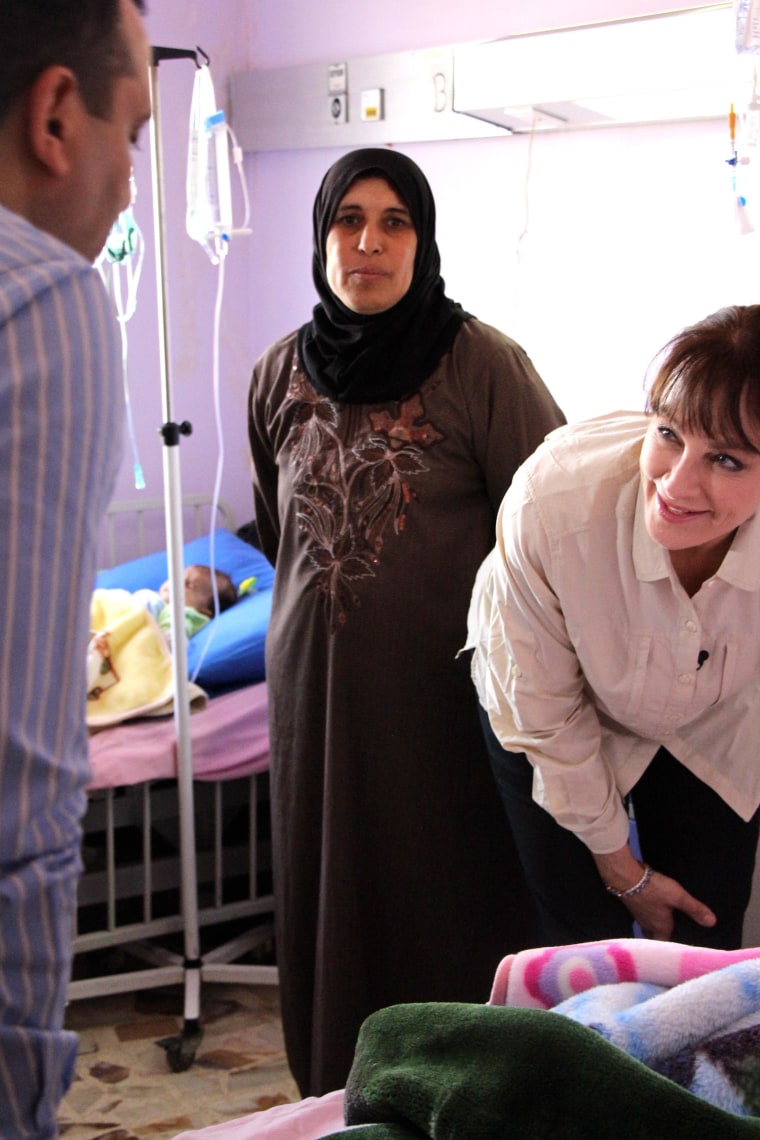The crisis begins for the children of Syria before they even leave the hospital.
At the Taanayel hospital in Lebanon, just over the border with Syria, there are only 34 hospital beds, but 21 working isolettes for newborns — just one sign of the humanitarian crisis here on the border.
Before the conflict, about one woman per day gave birth here. Now, doctors report 15 births per day plus C-sections. Syria has lost most of its hospitals in the conflict, so many women come here just in time to give birth. And although the hospital still sees Lebanese patients, Syrian refugees now outnumber Lebanese patients 10 to one.
Taanayel was our first stop of the day — and it’s where I will be spending the next 48 hours for the NBC News special series, "Forgotten? Syria's Children of War." The live documentary will unfold on Tuesday and Wednesday, following the lives of Syrian children over 48 hours on NBCNews.com, TODAY and Nightly News.

Tucked behind two plant nurseries, the small Taanayel hospital seems unassuming. Through the metal grate on the windows we saw a shepherd tending a flock of sheep. Groups of men were drinking strong Turkish coffee in the adjacent café. But the reality is that this small hospital serves more than 18 percent of Syrian refugees in Lebanon.
The staff keeps the facility clean, but unlike most American hospitals there are no frills. In the delivery rooms, two almost-mothers labored in street clothes side by side in stirrups without a birth coach or even a family member in the tiny room to help them along.
After the hospital, I returned to a refugee camp I had visited just two months ago when I was doing a report on the polio epidemic. It is known as “onion camp” because the fertile land made it an ideal place for growing onions and potatoes and the strong scent of onions was omnipresent. I remember this as a rich, hot, vibrant camp with children running around and small stalls set up throughout.
When we arrived today, however, it was almost barren. Practically nothing remained from two months ago. The air stunk of raw sewage and food scraps.
I managed to find a woman I met during that previous visit. She was pregnant at the time, and she has since given birth to a healthy baby. She was able to remain on the land because her husband had some carpentry skills and built a semi-permanent structure on cinder blocks. He was able to find work in Beirut and commutes almost 1.5 hours each day.
Most of her neighbors, though, had moved on. Because of the influx of refugees, many are forced to settle on private land and the landowners become de facto landlords — sometimes charging large sums for the privilege of setting up a tent. But the refugees find that without the infrastructure provided by humanitarian groups, living conditions are sometimes unbearable.
These are people who left unimaginable war-torn conditions for hopes of a better life in Lebanon but have landed in a relative no-man’s land with daily uncertainties of how to provide shelter and food for their families.
Today we watched mothers excitedly take newborns home, but the question remains — where are they going, and what does the future hold for these children?
Chief Medical Editor Dr. Nancy Snyderman is filing a daily report from Lebanon's Bekaa Valley as part of the “Forgotten? Syria’s Children of War” series, sharing the stories of the innocent casualties of Syria's civil war. Stanford/NBC News Global Health Media Fellow Hayley Goldbach contributed to this dispatch. Follow the series with the hashtag #SyriasChildren.